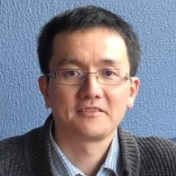Semiconductor Catalysis
A special issue of Catalysts (ISSN 2073-4344). This special issue belongs to the section "Photocatalysis".
Deadline for manuscript submissions: closed (31 October 2018) | Viewed by 15099
Special Issue Editor
Interests: electrocatalysis; electrochemical water splitting; electrochemical CO2 reduction
Special Issues, Collections and Topics in MDPI journals
Special Issue Information
Dear Colleagues,
The seminal work of Honda and Fujishima in 1972 demonstrated the feasibility of photoelectrochemical water splitting via TiO2 to produce a high-energy carrier, hydrogen. This simple, yet powerful, solar-driven, clean energy technology has, since, promoted enormous research activities in catalysis, based on semiconducting materials.
Over the past 40 years, a wide-range of semiconductors have been employed as light absorbents to efficiently harvest solar energy, and the coupling of suitable catalysts, promoting chemical reactions to generate desirable fuels. Among the keys that underpin the progress in semiconductor catalysis are strategies, such as band-gap engineering, to tune the light absorption spectra and minimize charge recombination; integration of efficient co-catalysts; and rational material design through a fundamental understanding, assisted by advanced analytical tools and theoretical modeling. In particular, it is worth mentioning significant nanostructuring efforts with the formation of low-dimensional nanomaterials have led to morphologies with improved surface area, light absorption and photoelectric functional properties. More recently, semi-biological approaches with hybrid semiconductors and biological enzymes have increasingly become of interest.
This Special Issue aims to cover recent progress and developments in semiconductor catalysis in terms of the activation of small molecules, such as H2O, O2, CO2 and N2, for fuel generation. Contributions of original results (including reviews) from all approaches in devising and developing new materials, characterizations, and strategies that lead to enhance fundamental and applied insight, are particularly welcome. All areas of photocatalytic and photoelectrochemical semiconductor catalysis for fuel generations, based on experimental results and/or theoretical modelling, would be of interest.
Dr. Chong-Yong LeeGuest Editor
Manuscript Submission Information
Manuscripts should be submitted online at www.mdpi.com by registering and logging in to this website. Once you are registered, click here to go to the submission form. Manuscripts can be submitted until the deadline. All submissions that pass pre-check are peer-reviewed. Accepted papers will be published continuously in the journal (as soon as accepted) and will be listed together on the special issue website. Research articles, review articles as well as short communications are invited. For planned papers, a title and short abstract (about 100 words) can be sent to the Editorial Office for announcement on this website.
Submitted manuscripts should not have been published previously, nor be under consideration for publication elsewhere (except conference proceedings papers). All manuscripts are thoroughly refereed through a single-blind peer-review process. A guide for authors and other relevant information for submission of manuscripts is available on the Instructions for Authors page. Catalysts is an international peer-reviewed open access monthly journal published by MDPI.
Please visit the Instructions for Authors page before submitting a manuscript. The Article Processing Charge (APC) for publication in this open access journal is 2700 CHF (Swiss Francs). Submitted papers should be well formatted and use good English. Authors may use MDPI's English editing service prior to publication or during author revisions.
Keywords
- Semiconductor
- Photocatalysis
- Photoelectrochemistry
- Cocatalyst
- Water splitting
- Proton reduction
- CO2 reduction
- N2 reduction
- Nanostructured
- Solar fuels





